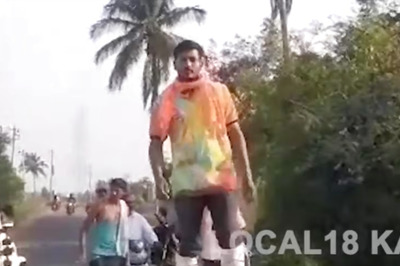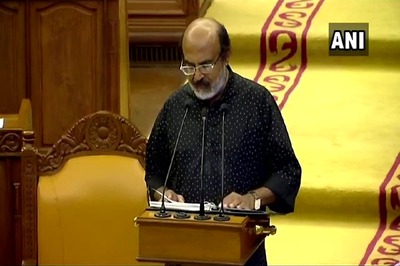
views
New Delhi: Even as the Union government pushes for water conservation with the formation of the Jal Shakti Ministry, budgetary allocation for the two departments within the ministry has gone down by 9.4 per cent.
The allocation has reduced from Rs 8,860 crore in 2018-19 to Rs 8,245 crore for the Department of Water Resources, River Development and Ganga Rejuvenation and from Rs 22,356.60 crore to Rs 20,016.34 crore for the Department of Drinking Water and Sanitation.
Finance Minister Nirmala Sitharaman also announced that additional funds from Compensatory Afforestation Fund Management and Planning Authority (CAMPA) could be utilised for the Jal Shakti Abhiyan. The utilisation of CAMPA funds has been a contentious issue and in January this year, the Supreme Court had directed that funds worth around Rs 54,000 crore under the fund be transferred to a new authority created by the Union government for utilisation towards both Centre and state greening activities.
A key thrust of the budget was the National Rural Drinking Water Mission, which saw a budgetary increase from Rs 7,000 crore to Rs 10,000.66 crore from 2018-19 to 2019-20.
However, Namami Gange, a flagship programme of the BJP after it came to power in 2014, saw a reduction of budgetary allocation from Rs 2,300 crore in 2018-19 to Rs 750 crore in 2019-20. The Central Water Commission saw a reduction from Rs 443.49 crore to Rs 426.55 crore. The Central Ground Water Board saw a reduction from Rs 242.22 crore to Rs 229.45 crore from 2018 to 2019.
Major irrigation projects, including Farakka Barrage Project, flood protection works in eastern and western sectors and dam rehabilitation and improvement programme, saw a decrease in budgetary allocation from Rs 319.01 to Rs 209.38 crore. Meanwhile, the budgetary allocation for river basin management was reduced from Rs 226 crore to Rs 200 crore.
Access to drinking water is a priority, said Sitharaman, while reiterating the newly formed Jal Shakti Ministry’s aim of “Har Ghar Jal" by 2024 under the Jal Jeevan Mission. Sitharaman also said the government would look at rain water harvesting and water discharge management to work towards India’s crippling water crisis. “1,592 blocks have been identified, which are over-exploited in terms of ground water, and government will focus on these blocks," she said.
Meanwhile, the Centre has emphasised that it wishes to complete 10 lakh projects linked to water conservation through rural employment scheme MGNREGA in the first 100 days of the government. The Union Budget allocated Rs 60,000 crore for the same — an increase of nine percent from last year.
As per government data, the budget estimate for the Mahatma Gandhi National Rural Employment Guarantee Programme in 2018 was Rs 55,000 crore, while it was increased to Rs 60,000 crore in 2019. An official said, “The scheme is one of the most important mitigators for rural areas where water scarcity is a problem. It allows rural incomes to be generated, while focusing on conservation of natural resources."
Of these 10 lakh projects, more than 2.5 lakh will be built in the 1,192 stressed blocks selected for Jal Shakti Abhiyan. These projects are also expected to be finished in the first 100 days. The government has launched Jal Shakti Abhiyan, a water conservation campaign with an emphasis on 1,593 stressed blocks in 256 districts across the country.



















Comments
0 comment